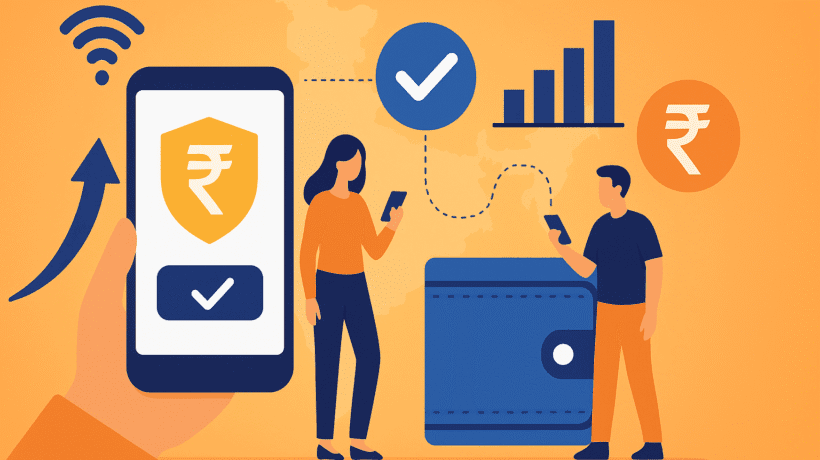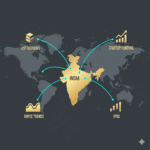Latest Developments in India's Digital Payments Ecosystem (September 2025)
Introduction
India’s digital payments ecosystem is evolving at a rapid pace, with new innovations, regulatory updates, and financial inclusion initiatives reshaping the way people transact. From raising transaction limits to introducing biometric devices, the ecosystem is becoming more accessible, secure, and versatile. Here’s a roundup of the latest developments:
1. UPI Transaction Limits Raised
The National Payments Corporation of India (NPCI) has increased the UPI transaction limit to ₹5 lakh per transaction for select categories such as education, travel, merchant payments, and taxes. Certain categories like insurance premiums and capital markets now allow up to ₹10 lakh per day.
Impact: UPI is no longer limited to small, daily transactions. It is now a viable option for large-value payments, reducing dependence on traditional transfers like NEFT or RTGS.
2. RBI Tightens Regulations for Payment Aggregators
The Reserve Bank of India (RBI) has introduced stricter norms for Payment Aggregators (PAs) and Gateways (PGs):
Non-bank PAs must obtain RBI authorization.
Minimum net worth requirement: ₹15 crore at application, rising to ₹25 crore by the third financial year.
Mandatory security, escrow accounts, and robust IT infrastructure.
Impact: These measures aim to enhance trust, reduce fraud, and ensure stability. While smaller players may struggle with compliance, overall consumer confidence is expected to grow.
3. Mandatory KYC & Restrictions on Rent Payments
RBI has mandated full KYC compliance for payment aggregators. Additionally, rent payments via credit cards through aggregator platforms have been disallowed.
Impact: This closes loopholes that allowed misuse of credit cards for high-value recurring rent payments and enhances traceability in the system.
4. Paytm Launches Credit Line on UPI
In partnership with Suryoday Small Finance Bank, Paytm has introduced a credit line on UPI, offering users instant short-term credit directly linked to their UPI IDs.
Impact: This innovation blends digital payments with embedded credit, giving users flexibility. However, it also raises questions about credit risk management and regulation.
5. Biometric Payment Innovation: “ThumbPay”
IoT startup Proxgy has launched ThumbPay, a device that allows payments using Aadhaar-based thumb impressions. Users can transact via UPI without needing smartphones, cards, or wallets.
Impact: A major step for financial inclusion, especially in rural and underserved areas, where smartphone access is limited.
6. Real-Money Gaming Ban Hurts Payment Aggregators
The regulatory ban on real-money gaming platforms has significantly reduced revenue streams for payment aggregators that relied on this sector.
Impact: Aggregators may need to diversify and target more stable sectors, highlighting how regulatory changes in one industry affect the payments ecosystem.
7. Pine Labs IPO Approved
Pine Labs, one of India’s leading merchant payment providers, has received SEBI approval for its IPO. It is expected to raise up to $1 billion, valuing the company around $6 billion.
Impact: This marks strong investor confidence in digital payment infrastructure and signals further growth in merchant acquiring and POS solutions.
8. Digital Nari Initiative for Rural Women
The Digital Nari program, launched in Varanasi, is training rural women in digital services like payments, banking, insurance, and e-commerce. These women, called BC Sakhis, will act as community service providers.
Impact: Empowering women as digital leaders strengthens grassroots financial inclusion and spreads awareness in rural communities.
Big Picture Trends
Financial Inclusion: Biometric devices and rural initiatives are bringing digital payments to the last mile.
High-Value Digital Transactions: UPI is evolving to handle larger payments like fees, insurance, and investments.
Regulatory Tightening: RBI’s stricter rules focus on stability, security, and transparency.
Fintech + Bank Partnerships: Embedded credit solutions like Paytm’s credit line on UPI signal a new era of integrated financial services.
Challenges Ahead
Compliance costs may squeeze smaller fintech players.
Embedded credit solutions raise risks of defaults.
Privacy concerns with Aadhaar-linked biometric payments.
Digital divide still persists in rural and remote areas.
Conclusion
India’s digital payments ecosystem is at an inflection point. With UPI handling bigger transactions, new innovations like ThumbPay, and stronger regulatory frameworks, the country is setting the stage for a more secure, inclusive, and versatile digital economy. However, ensuring balance between innovation, regulation, and inclusion will be key to sustaining this growth.
At Mera Compliance, we help businesses and individuals adapt quickly to these changes from updating GST systems to ensuring error-free compliance. 📩 Contact us today to stay ahead and compliant.
FAQ'S
Q1. What is the new UPI transaction limit in India (2025)?
The UPI transaction limit has been increased to ₹5 lakh for select categories like education, travel, merchant payments, and taxes. For insurance and capital markets, the daily cap has been raised to ₹10 lakh.
Q2. Why has RBI introduced stricter rules for payment aggregators?
The RBI aims to enhance security, transparency, and stability in digital payments. New rules require full KYC, higher net worth thresholds, escrow accounts, and IT security standards.
Q3. Can I still pay rent using a credit card on aggregator platforms?
No. The RBI has disallowed rent payments via credit cards through aggregator platforms to avoid misuse and credit risks.
Q4. What is Paytm’s new credit line on UPI?
Paytm, in partnership with Suryoday Small Finance Bank, has launched a credit line on UPI. This allows users to access short-term credit directly through their UPI IDs.
Q5. What is the ThumbPay device?
ThumbPay is a biometric payment device launched by Proxgy. It enables Aadhaar-based thumb impression payments through UPI, without needing smartphones, cards, or wallets.
Q6. How does the Digital Nari initiative help rural women?
The program trains women in rural India to offer digital financial services like payments, banking, and insurance. These women, called BC Sakhis, act as local service providers, boosting financial inclusion.
Q7. What challenges does India’s digital payment system still face?
Some key challenges include compliance costs for small fintechs, privacy concerns with biometric payments, risks of defaults with credit lines, and the persistent digital divide in rural regions.





